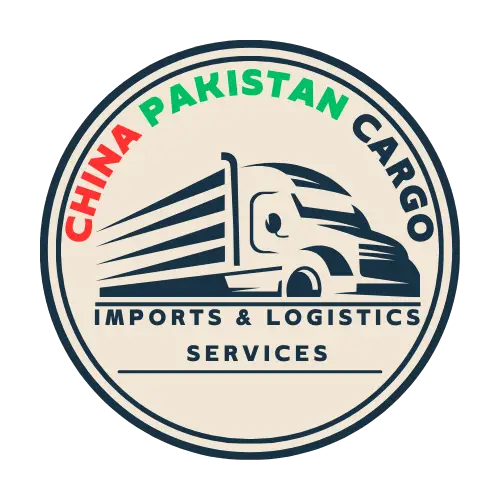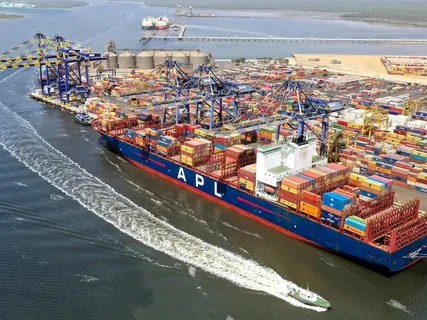Chinese carriers launched new routes across key corridors this month, reshaping how exporters plan capacity and how importers schedule inbound stock. These additions arrive right as winter schedules kick in, tightening day-of-week options and amplifying hub flows. Below, you’ll find dated updates from the last two weeks, what they mean for booking regional trades, how to navigate air cargo rates amid capacity constraints, and where opportunities open up for China to Pakistan shipping within the wider air freight market.
What Moved (with Dates)
Nov 4, 2025 — Shanghai–Riyadh–Budapest Main-Deck Launch
China Eastern introduced a scheduled freighter linking Shanghai Pudong, Riyadh, and Budapest (three times weekly; about a 17-hour rotation). It’s a fifth-freedom design that connects China with the Middle East and Central/Eastern Europe on a predictable main deck, tightening transit control for e-commerce, electronics, and auto components. The same update cycle also flagged a broader trend: in the first nine months of the year, 169 new international air cargo routes were opened from China, adding more than 350 round-trip flights per week—a clear signal of a busier air freight market even as capacity constraints shift week to week.
Oct 30, 2025 — Qingdao–Bangkok–Southeast Asia Cargo Corridor
Shandong Airlines launched its first Qingdao–Southeast Asia cargo pattern via Bangkok, with onward legs to Vietnam and the Philippines. This gives coastal factories a faster Southeast Asia bridge, easing hand-overs when air cargo rates spike elsewhere and helping regional vendors keep promised ETAs despite rolling capacity constraints.
Nov 6, 2025 — Daily Hong Kong–Changsha Spoke
Cathay Pacific added a daily non-stop between Hong Kong and Changsha. The spoke feeds Hunan shippers into Hong Kong’s global network, improving schedule reliability. More spokes into a mega-hub can boost throughput at peak and, paradoxically, intensify capacity constraints on cut-off windows—so documentation precision matters to avoid premium air cargo rates on late loads.
Nov 5, 2025 — Phnom Penh Freighter, 2× Weekly (Etihad Cargo + Teleport)
A new A321F deployment from Cambodia’s Techo International (KTI) via Abu Dhabi adds roughly 50 tonnes of weekly main-deck lift. For garments, perishables, pharmaceuticals, and electronics, this is a clean lane into long-haul networks—useful when regional capacity constraints build and the air freight market reprices priority uplift.
Winter 2025/26 (Oct 26, 2025–Mar 28, 2026) — Seasonal Baseline
China’s winter–spring schedule plans approximately 119,500 weekly passenger and cargo flights across around 210 airlines, up 1.3% year-on-year. That’s steady growth—yet winter re-times and widebody rotations still compress bellyhold on certain days. This is why the story of a Chinese carrier launching new routes can feel like a paradox: more flights overall, but tighter day-specific choices that keep air cargo rates firm when volume bunches mid-season.
China ↔ Brazil / US / Australia — Long-Haul Context
Across the same period, long-haul connectivity has been strengthening. Air China’s Beijing–Madrid–São Paulo resumed earlier in the year with frequency boosts. Chinese carriers are increasing weekly flights to the US, and new routes to Australia, including Guangzhou–Darwin starting in December 2025, are expanding outbound reach. These moves create new options for booking regional trades and balancing rates when the air freight market pivots.
How These Routes Change Your Booking Strategy
- Shorter, More Controlled Routings – Fifth-freedom designs and new spokes reduce touches. When a Chinese carrier launched new routes like Shanghai–Riyadh–Budapest, forwarders can lock sturdier schedules and shield priority SKUs from sudden air cargo rate shifts.
- Hub Leverage (and Risk) – More spokes into hubs like Hong Kong improve connectivity but compress cut-off windows. Miss a hand-over and you’ll face immediate capacity constraints.
- Regional Relief Valves – Phnom Penh’s added main-deck lift gives Indochina exporters a pressure release when ocean schedules or bellyhold tightens—one reason the air freight market often stabilizes faster on those lanes.
Playbook: Booking Regional Trades the Smart Way
- Segment by SKU Criticality – Put must-arrive SKUs on the most direct new routings (e.g., Shanghai–Riyadh–Budapest), and use economy options for less-sensitive freight to keep blended air cargo rates predictable.
- Aim Mid-Week – Winter schedules bunch connections around weekends. Mid-week uplift can dodge capacity constraints and preserve on-time performance.
- Engineer for Chargeable Weight – Small density wins (3–5%) across cartons can offset seasonal air cargo rates and keep quotes steady as the air freight market tightens.
- Build Dual-Gateway Options – Pair a hub spoke (e.g., Hong Kong–Changsha) with a secondary gateway to keep space flexible when a Chinese carrier launches new routes and drives demand spikes.
- Paperwork Early, Always – One missing HS code or incomplete invoice can push you into costlier uplift under capacity constraints.
For Teams Managing China to Pakistan Shipping
China to Pakistan shipping benefits directly from these upstream expansions. Hong Kong’s daily newspapers from Changsha and the Shanghai–Riyadh–Budapest bridge improve consolidation choices for South China and inland suppliers. Lock space 7–10 days earlier for promotional shipments, share carton sizes and stackability, and prepare standby routings via GCC hubs. When Chinese carriers launch new routes to absorb peak demand, these habits keep your landed costs predictable and your schedules intact within the air freight market cycle.
Bottom Line
Airlines have launched new routes at exactly the moment planners need them most. The result is a denser network with better control—yet still enough winter-season compression to keep air cargo rates firm when bookings bunch. Treat each dated update as a lever: use the main-deck where timing matters, lean on new spokes for predictable cut-offs, and stay agile when capacity constraints flare. That’s how you’ll turn the Chinese carrier launched new routes momentum into reliable timetables—and smarter costs—through the holidays.
Frequently Asked Questions
What types of new routes are Chinese carriers launching?
In 2025, Chinese cargo airlines and carriers will launch a significant number of new international routes. For example, one article noted that Chinese carriers launched 169 new international air-cargo routes in the first nine months of the year.
These new routes span Asia, Europe, the Middle East and Africa, intended to boost trade flows and regional connectivity.
Why are these new cargo routes important for regional trades, including South Asia and Pakistan?
These routes provide faster, more diversified logistics options, which reduce transit times, increase capacity, and lower shipping costs. For example, a new all-cargo air route between Urumqi (Northwest China) and Islamabad was launched to strengthen the China–Pakistan link.
For importers and exporters in regions like Pakistan, this means improved access and more reliable delivery of goods.
How do these new routes affect booking regional trade consignments?
With expanded route networks, carriers are able to offer more frequent flights, increased capacity and new hubs for regional cargo consolidation. This means businesses can book shipments with better lead times, more routing options and possibly lower cost per unit because of enhanced logistics efficiency.
Do these route expansions include all-cargo flights only, or also passenger flights carrying freight?
The expansions include both dedicated all-cargo flights and passenger aircraft that carry freight as belly-cargo. For example, some new services are specifically described as “all-cargo” flights linking Chinese manufacturing hubs with Southeast Asian or South Asia
This dual‐type capacity helps diversify freight options.
Are these route launches already active, and how can businesses take advantage of them?
Yes — many routes are already active or scheduled for imminent operation. For instance, the Urumqi-Islamabad route commenced in March 2025.
Businesses should monitor announcements from carriers and logistics providers, and liaise with freight forwarders to leverage these new routes for improved lead times and cost efficiency.
What kinds of cargo are ideal for these routes?
The route expansions often prioritise e-commerce goods, electronics, automotive parts, fresh produce and high-value items. According to reports, many new routes carry cross-border e-commerce, electronics and auto parts.
This means if your cargo falls into these categories, you may benefit most from the new capacity.

